Hi friends, my name is Rick Lucas and my one-man company, called Lightplay develops tabletop and digital games. Tabletop is a more recent focus for the company, but ironically, brings me full circle as my original design experience was for tabletop games.
I have over 30 published titles to my name in either a production or design (or both) capacity, and spent five years managing the role-playing, adventure, and strategy game categories for Electronic Arts.
Lightplay, as the name suggests, develops ‘light’ games, suitable for a wide range of interests, ages, and skill levels. My current game is called ‘Hipsters and Hamsters’ and can be found on Kickstarter or by going to hipham.com.
Hipsters and Hamsters is a true indie game, in every sense. I designed it, my brother-in-law created the illustrations, my wife did much of the graphic design, and our family and friends were the first playtesters.
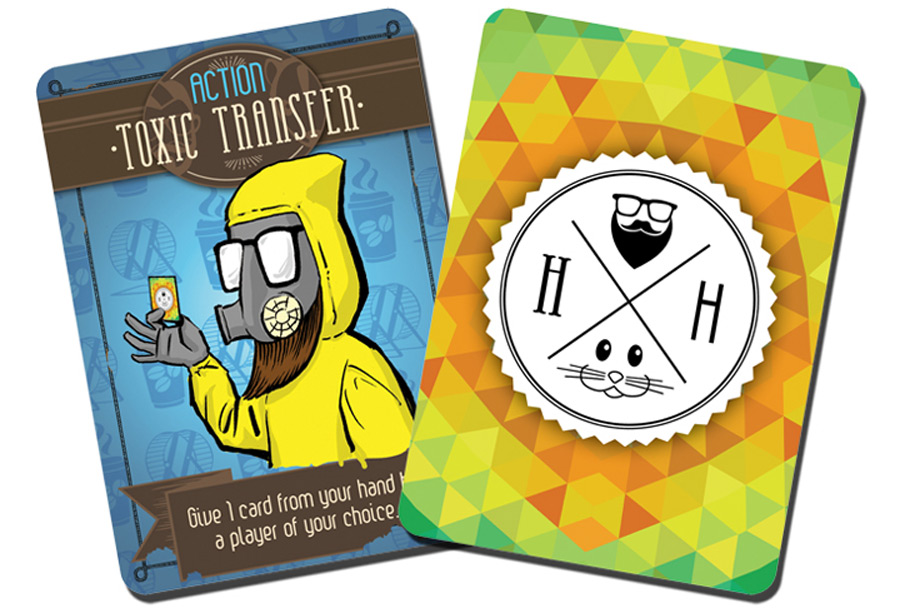
It’s a humorously-themed, light card game for 3-6 players (player vs. player or team play), ages 7+, with an average play time of 10-15 minutes. No one is going to confuse Hipsters and Hamsters with a Euro or complex worker placement game, but it makes a great, fast paced filler for game groups or family game night.
To begin the game, each player receives four cards. In a unique twist, players can win the game in either of two ways:

Hipsters shun material accumulation. A player wins as a Hipster by having no cards in their hand at the end of their turn. Hamsters, by contrast, are born hoarders. A player wins as a Hamster by having eight cards in their hand at the end of their turn.
Players don’t declare which character (Hipster or Hamster) they’re playing as and can switch between characters at any time, as many times as they wish, adjusting their strategy on-the-fly in response to draws and opponent actions. All in-game action is dictated by the four card types:
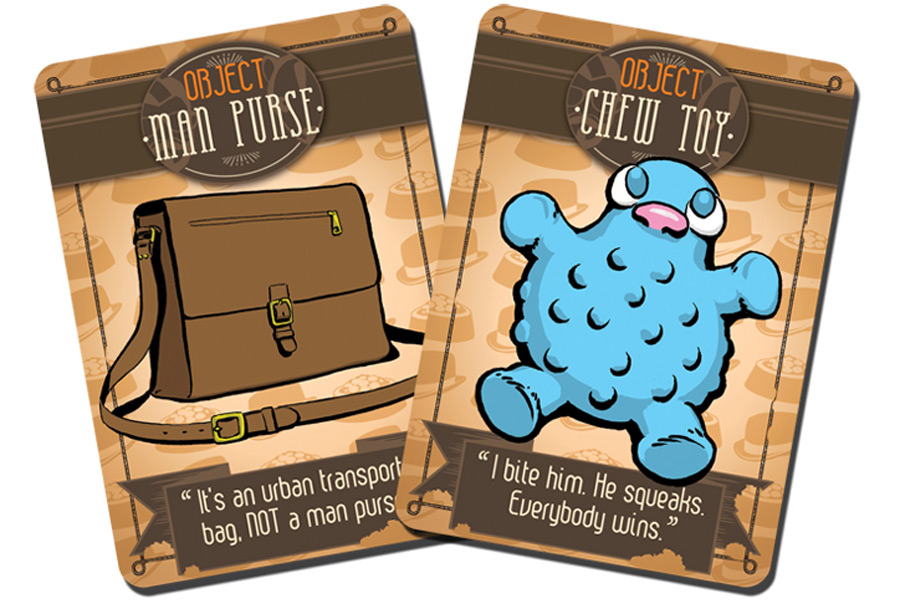
Object Cards serve as simple discards. No action is taken when an Object Card is played. If a player has more than one of the same Object Card (e.g. two Chew Toys), they may discard one or both on their turn.
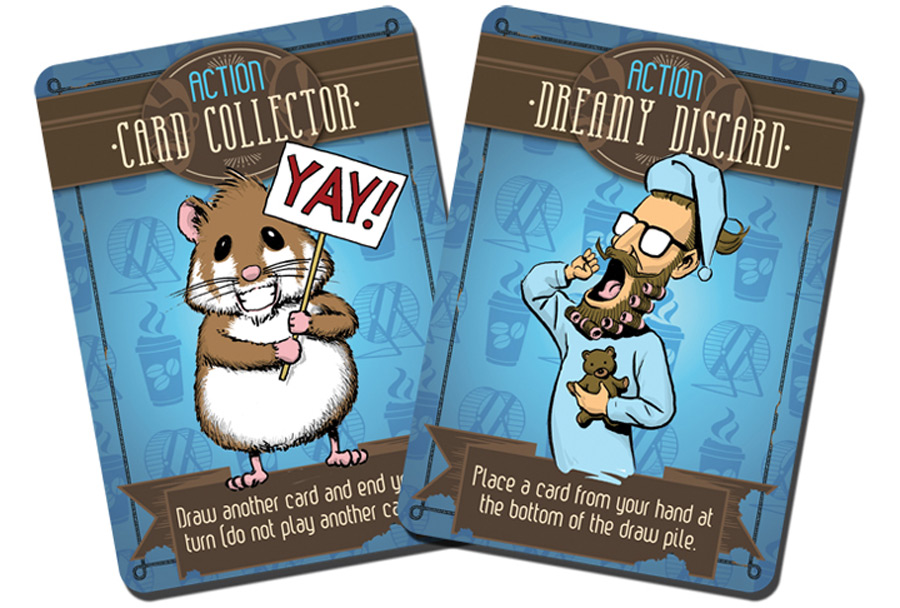
Action Cards trigger the action shown on the card when played. These actions help players eliminate, or accumulate, cards in their hand.
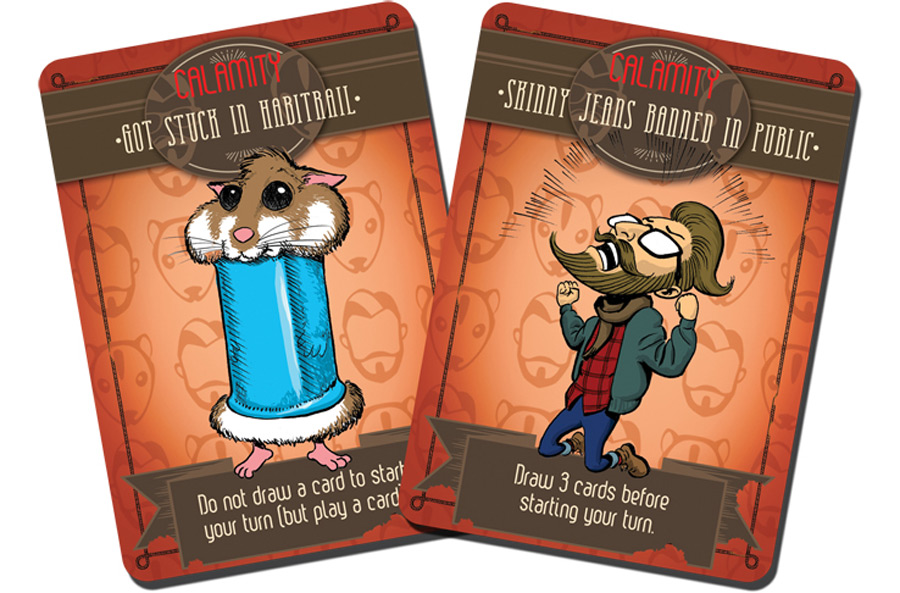
Calamity Cards can be played at the start of an opponent’s turn. Playing a Calamity Card forces your opponent to take the action on the Calamity Card before starting their turn.
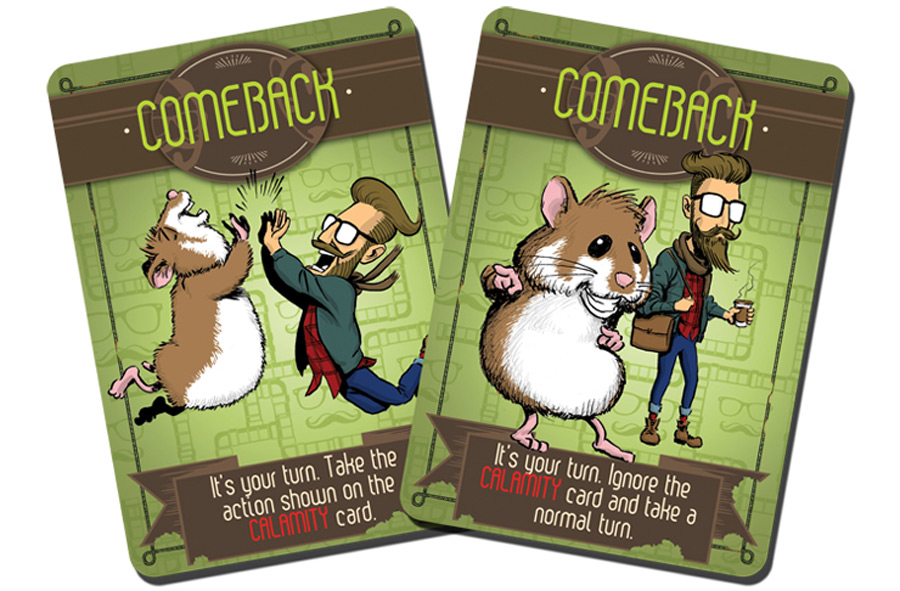
Comeback Cards can be played on Calamity Cards, and it becomes the turn of the person playing the Comeback Card. Depending on the Comeback, the person playing the card will either take the action on the Calamity Card, or ignore it.
Calamity and Comeback cards ensure minimal downtime, as every player has the potential to be engaged on every play of the game.
Despite being easy to pick up and play, Hipsters and Hamsters offers rich strategic decision making, as opposing sets of victory conditions lead you to flip between playing styles in response to cards you’ve drawn or had played against you – all while attempting to control turn order to alter the flow of play.
The Advanced game variant is played in rounds, with each player declaring in advance which character they’re playing as. Players are still free to switch between characters and can end the round by meeting either set of victory conditions. However, ending the round as your declared character awards twice the points (20 versus 10). The first player to reach 50 points wins the game.
Hipsters and Hamsters also includes a robust team play variant for 4 or 6 players. In team play, each player declares which character they will be playing as. Teammates do not need to play as the same character and can, in fact, benefit from playing as different characters. Team play uses the Advanced game variant, but with the added strategic consideration of using Calamity and Comeback cards to protect teammates and improve their hand.
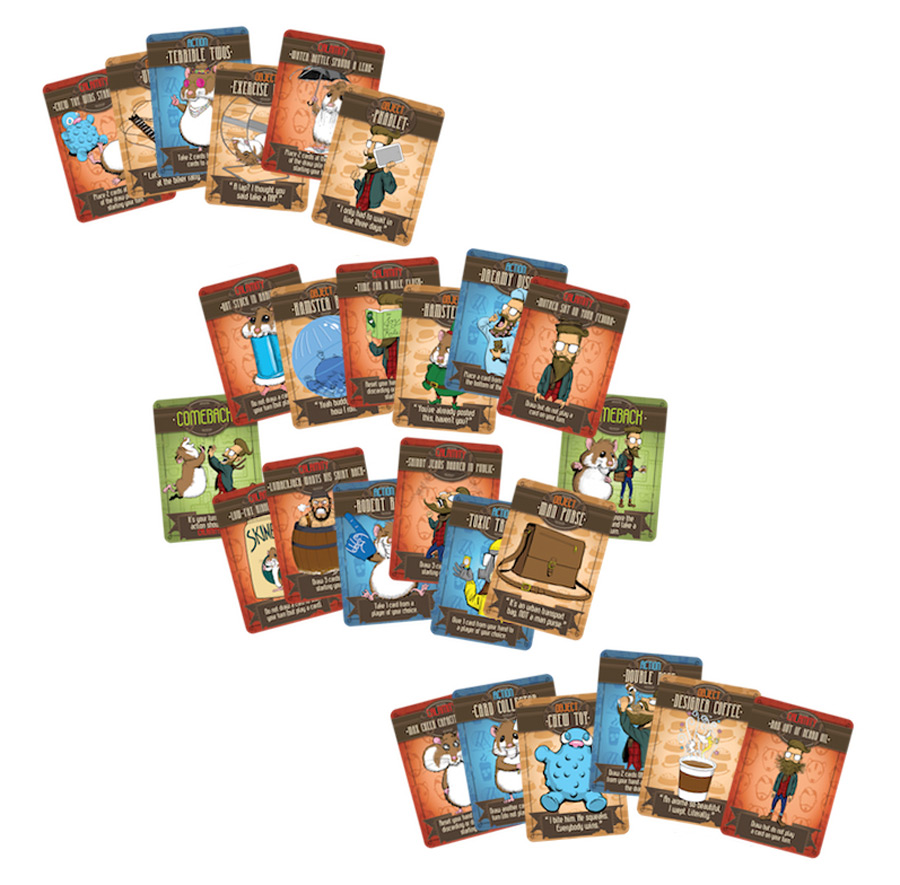
On it’s face, Hipsters and Hamsters is very straightforward. One of the paradoxes of game design though, is that ‘light’ games are often some of the most challenging to create. Unlike complex games, where holes in the game logic can be disguised by layering more rules on top of the game mechanic, with simple games there is no hiding from bad logic.
My personal design philosophy, for both tabletop and digital, is to create the ‘simplest’ ruleset possible and then obsessively refine every detail, producing a polished, well-balanced, and above all, highly enjoyable gaming experience.
To that end, my design notes for Hipsters and Hamsters reads like a schematic, filled with Boolean values and conditional statements charting every possible permutation of played cards and their outcome ensuring precise balance between the two playing styles (Hipster and Hamster) as well as all in-game actions.
As designers, if we’ve done our jobs well, all this ‘wrench turning’ will be invisible to players, allowing you to break away from the world for a few precious moments and just have fun!
I hope you’ll take a minute to check out Hipsters and Hamsters and let us know what you think. Feel free to contact me through the Lightplay website if you have any questions. Cheers!
Did you like this story? Please share or comment. Go to this page to submit a story yourself. Subscribe to our online magazine here!

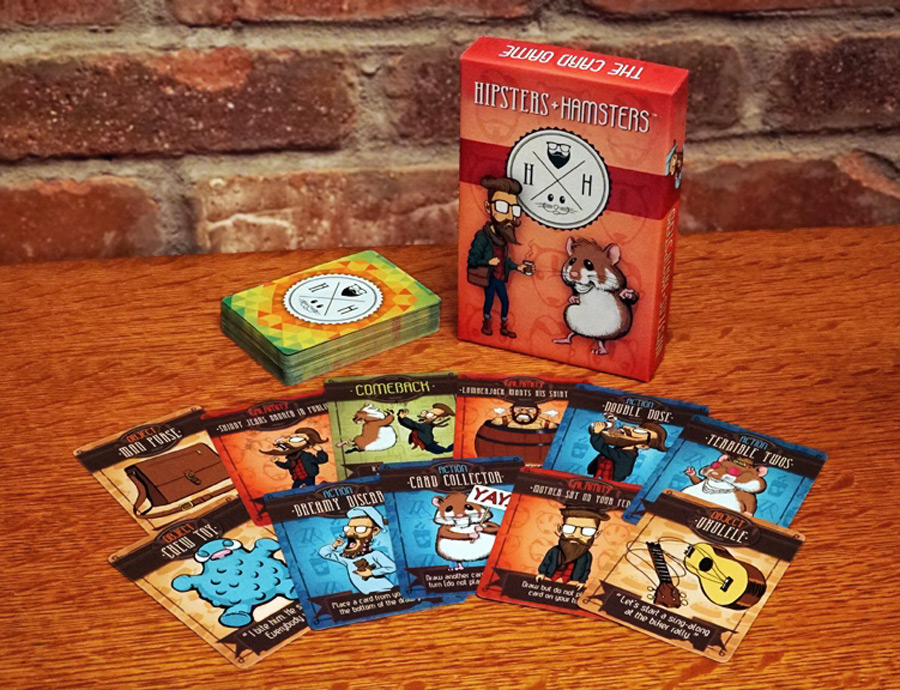
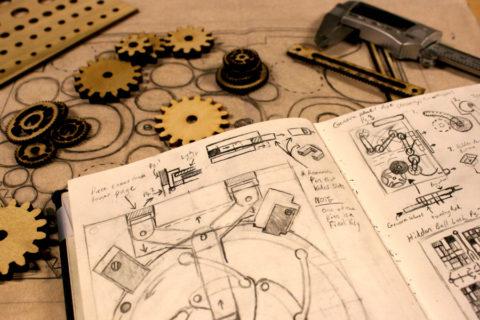
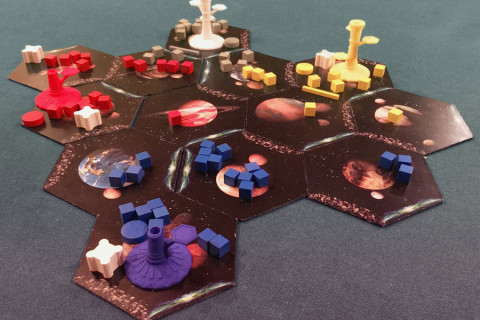
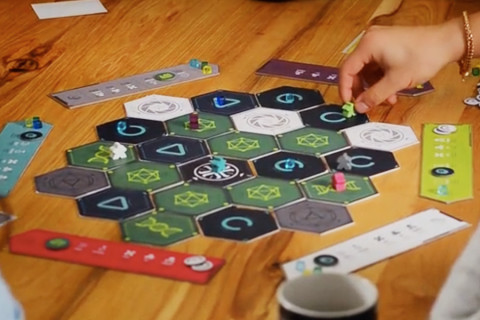
It’s a game. Five dollars is free. Try it It’s not an easy game
->-> 카지노검증업체
Thanks for sharing. I read many of your blog posts, cool, your blog is very good.
Thanks for sharing. I read many of your blog posts, cool, your blog is very good.
I don’t think the title of your article matches the content lol. Just kidding, mainly because I had some doubts after reading the article.
Thanks for sharing. I read many of your blog posts, cool, your blog is very good.
Bird and Tale https://birdandtale.com/ is a whimsical online platform that beckons you into a world of charm and creativity. With its captivating illustrations and enchanting storytelling, this website is a delightful escape from the mundane. The carefully curated collection of products reflects a keen eye for beauty and an appreciation for the unconventional. From quirky accessories to imaginative home decor, Bird and Tale offers a unique shopping experience that is sure to leave you inspired. Dive into a realm where every item tells a story, and every purchase is a little piece of magic. Embark on a journey of whimsy with Bird and Tale!
Can you be more specific about the content of your article? After reading it, I still have some doubts. Hope you can help me.
I don’t think the title of your article matches the content lol. Just kidding, mainly because I had some doubts after reading the article.